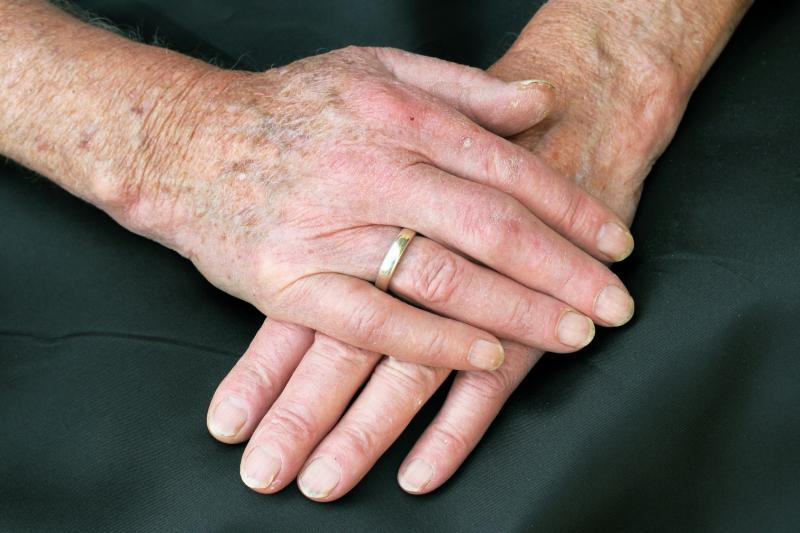
In patients with active psoriatic arthritis (PsA), treatment with secukinumab at 300 and 150 mg with or without loading regimen inhibits radiographic progression, the rates of which remaining low over 52 weeks of treatment, while showing consistent clinical efficacy and a favourable safety profile, according to the 52-week data from phase III FUTURE 5 trial.
“The results reported in this paper further substantiate previously published data from the FUTURE 1 and 5 studies that demonstrated significant and sustained inhibition of radiographic progression in patients with PsA,” the investigators said. [Ann Rheum Dis 2018;77:890-897; RMD Open 2018;4:e000723]
A total of 996 active PsA patients underwent randomization at baseline, among whom 862 (86.6 percent) completed 52 weeks of treatment: 204 in the 300-mg load secukinumab arm, 201 in the 150-mg load arm, 193 in the 150-mg no-load arm and 264 in the placebo-to-secukinumab arm. Treatment was administered at weeks 1, 2 and 3, and every 4 weeks starting at week 4.
Radiographic progression, assessed using the van der Heijde-modified total Sharp score (vdH-mTSS), was low at week 52 across all treatment groups. Most patients treated with secukinumab showed no radiographic progression (change from baseline in vdH-mTSS ≤0.5): 91.8 in the 300-mg arm, 85.2 percent in the 150-mg arm and 87.2 percent in the 150-mg no-load arm. [Rheumatology 2019;doi:10.1093/rheumatology/kez420]
Random slope data revealed numerically lower progression in the 300-mg and 150-mg no-load groups than in the 150-mg group (–0.18 and –0.20 vs 0.11, respectively). Meanwhile, based on observed data, progression was lower with the 300-mg regimen vs the 150-mg and 150-mg no-load regimens (–0.09 vs 0.13 and 0.21, respectively).
Furthermore, improvements across all efficacy endpoints, including disease activity and physical function, persisted through week 52 in the overall population. The ACR20 response was 68.9 percent in the 300-mg arm, 64.1 percent in the 150-mg arm and 65.8 percent in the 150-mg no-load arm.
DAS28-CRP score decreased by a mean of –1.92 with the 300-mg regimen, –1.72 with the 150-mg regimen and –1.83 in the 150-mg no-load regimen from baseline at week 52. The corresponding mean change in Short Form 36 Physical Component Summary Score (SF-36 PCS) score was 7.16, 6.31 and 7.03.
No new or unexpected safety signals were reported through 52 weeks. Nasopharyngitis and upper respiratory tract infection were the most commonly reported treatment-emergent adverse events.
“[T]his study validates the treatment effect of secukinumab on radiographic disease progression by utilizing different statistical methodologies, [such as random slope, evaluable radiograph and linear extrapolation] to analyse the radiographic data and obtaining very similar results from each of these methods,” the investigators pointed out.
They explained that the random slope analysis may be a preferred approach to deal with missing data, since it factored in more baseline covariates and handled statistical uncertainty more robustly than single imputation.
“The linear extrapolation approach, [on the other hand], handled intercurrent events (ie, placebo escape patients’ data) and used linearity to model vdH-mTSS over time. This model assumes a linear rate of progression for all patients and uses single imputation,” they added.
“The radiographic findings from the current study are aligned with those reported in the anti-TNF trials and further establish the therapeutic effect of secukinumab in patients with PsA,” the investigators said. [Arthritis Rheum 2007;56:476-488; Ann Rheum Dis 2014;73:1689-1694; Ann Rheum Dis 2014;73:233-237]